
views
X
Research source
It is also known as "underwater gardening."[2]
X
Research source
If there is an empty spot which you'd like to decorate with something naturalistic and beautiful in your home, or if you want to make a beautiful home for your pet fish, creating an aquascape is the perfect solution. By aquascaping and bringing a “small piece of nature” home, you can enjoy the beauty of Mother Nature indoors.
Creating the Aquascape

Get inspiration. Start by taking a look at different pictures of aquascapes on the internet to get some ideas for how you'd like to create yours. It's a good idea to look at pictures of aquascaping masterpieces in the IAPLC aquascaping contest. However, since many of those masterpieces are very large in size, they're probably unsuitable for your home, so if you want a aquascape smaller than 50 gallons (190 L), go to the Aquatic Gardeners Association aquascaping contest page for prize-winning aquascapes of smaller sizes.
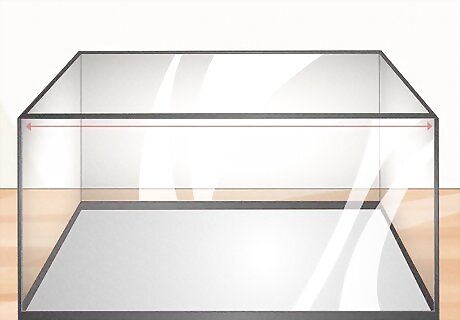
Decide the size of the tank you want. Tanks with a length of at least 60 centimeter (23.6 in) are recommended for beginners, as the water quality of nano tanks is harder to maintain. It is also harder to make the right choice of hardscape in such a small space.
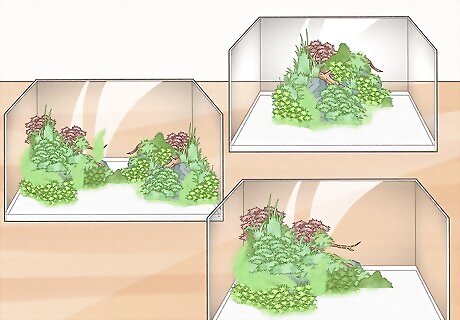
Decide which type of aquascape you want to create. There are different types of aquascapes, each a different style. Aquascapes can be further divided into different types, such as convex, concave or triangular aquascape. Decide which type you like the most: Diorama aquascapes: These are aquascapes that imitate natural landscapes, such as forests or valleys. These aquascapes require a lot of hardscape materials, so it can be costly. Dutch aquascapes: These are aquariums that display different species of aquatic plants neatly, based on the floral arrangements made in Holland. Hardscape items are not found in these aquascapes. Biotope aquariums: These are aquariums that closely imitate the environment in the wild in which animals live. Iwagumis: These are aquascapes that consist of rocks and carpeting plants. This type of layout is very simple in style and is based on a Japanese style. This type of aquascape represents a rocky landscape. Jungle aquascape: These are aquariums that simulate the jungle, where plants grow wildly and have tall plants covering the whole tank and floating plants covering the whole surface. Taiwanese aquascape: These are planted aquascapes with small replicas of structure or figure of people to imitate life.
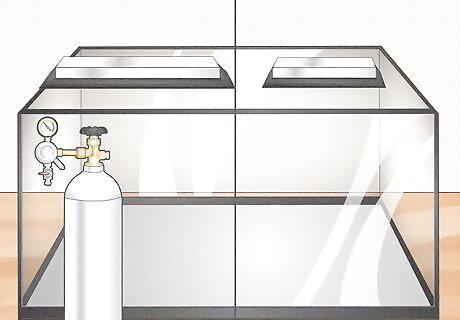
Decide whether you want to have a high-tech or a low-tech tank. High-tech tanks need stronger lighting and CO2 systems, which can be costly. On the other hand, low-tech tanks do not need a strong lighting and a CO2 system, which may be more suited to your budget. However, be aware that your choice of plants in a low-tech aquariums is limited, as only tougher plants, such as anubias, ferns and moss can really thrive, and the plants tend to grow slower without CO2. Low-tech tanks require less maintenance but if you are planning to grow red-colored plants, a high-tech tank will be needed.
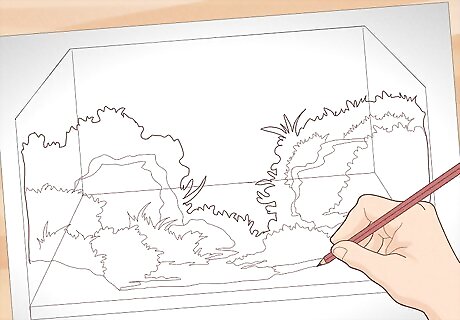
Plan your aquascape. Create a detailed outline of how your aquascape will look. To do this, either draw the aquascape out on a piece of paper using pen and pencils, or make one using an online aquascape planner. You'll need foreground, mid-ground and background plants, with each section of plants clearly differentiated for the landscape appearance to be obvious. Don't forget to label the species of plants you would like to use as part of your plan. This will help you to remember to buy the right ones. It is okay if you do not know what plant to use, planting requires experience. you can go to the tropica website to see different plants and how they look in aquascapes to help you determine how you want to plant your aquascape.
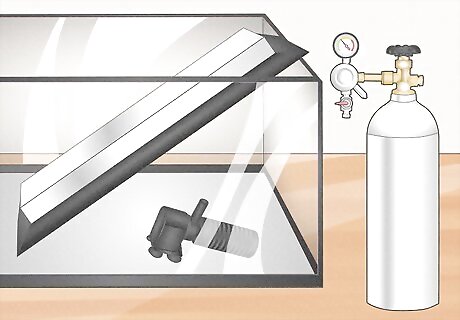
Buy the supplies to set up your aquascape. You'll need the tank, a filter and a suitable light And while CO2 is optional, you do need it if you're making the high-tech tank version. Purchase a tank made from low-iron glass. Low-iron glass does not have the greenish tint regular glass has, so your aquarium will look clearer. Do a leak test after you purchase the tank, before planting it. Do this by filling up the tank and leaving it filled for 2 hours. Once you're sure it's leak proof, you can then empty it. It is better to be safe than sorry! The preferable type of filter for your aquascape is a canister filter because it creates a strong water current and circulates the tank well. Note that the filter system needs both biological filter media (for example, a bioball) and a physical filter media (for example, filter cotton). An RGB or white light will do for your aquascape. Ensure that the temperature of the light is between 6700k and 10,000k, to allow for good plant growth. Make sure that the light fits the tank properly. It is also easiest for you if the brightness is controllable. If you are using an RGB lighting system, do not use the blue light spectrum. The blue spectrum light on freshwater typically causes brown diatom algae and will also create issues with blue-green algae. A CO2 system includes a CO2 cylinder, a regulator and solenoid, rubber tubings, a needle valve, a check valve, a bubble counter and a diffuser.
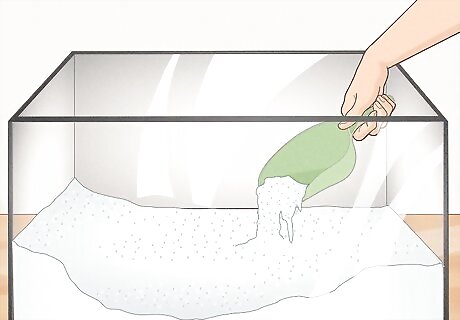
Buy and arrange the soil. Add soil to the aquascape first. If you also want to to put sand in front of the aquascape, place a cardboard barrier in first, to separate the soil and sand. Make a slope from the soil, to add depth. Always moisten the soil right before planting so that the slope won't collapse. Choose an aquarium soil that is suitable for the plants, such as ADA Amazonia.
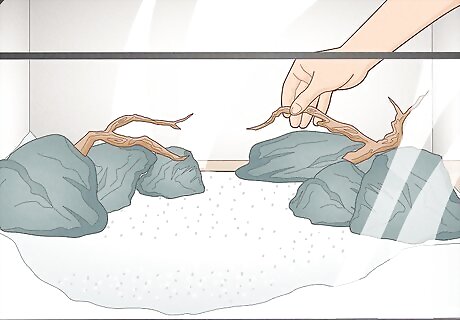
Arrange the hardscape. Soak the hardscapes for 2 hours before adding the pieces to the tank. When adding the hardscape, follow the golden ratio by placing smaller objects at the back and larger objects at the front. This increases the viewer's perception of depth.
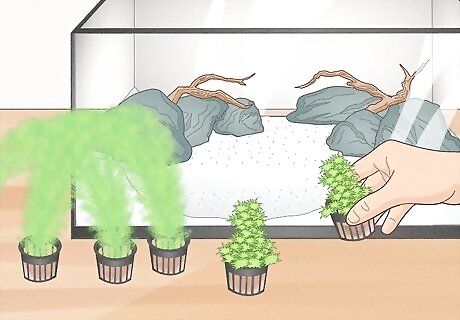
Buy the tank plants. As explained above, a complete aquascape usually includes background, mid-ground and foreground plants. Only buy plants after you have completed arranging the hardscape objects, as it will usually take you a few days to create a hardscape layout that you're happy with. Since the plants can dry out quickly, it's best to wait until you are ready to add them to the aquascape. Of course, if you have an another tank, you could buy them and keep them in that tank until you're ready, or you could buy tropical 1, 2 grow cups or wabikusas, which will keep well.
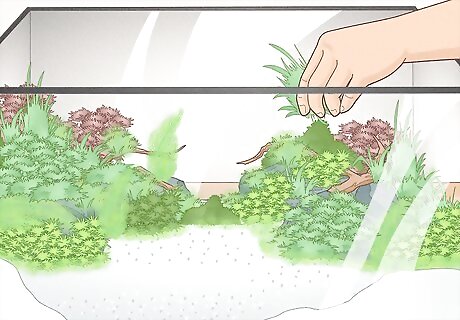
Plant the plants in the tank. It is easiest to use tweezers to plant your plants. Begin by wrapping the driftwood with moss (if you're using moss, as it is optional). Then plant the foreground plants, followed by the mid-ground plants. Finish up planting the background plants. Plant them diagonally into the soil so they won't float up easily. To decide how many cups of foreground carpeting plant you need for your aquascape, use the rule that a cup can cover an area as large as your fist. You do not need to plant too densely; instead, just wait a bit and you will get dense growth. For mid-ground plants such as anubias and javaferns (epiphytes), you can either tuck them in gaps between hardscapes or tie them to hardscapes with cotton lines to anchor them to the hardscapes. Do not bury the rhizome of roots of these plants in the soil, as it will kill them. Moss can also be wrapped around a rock if you're using rocks in the display.
Filling the Tank with Water
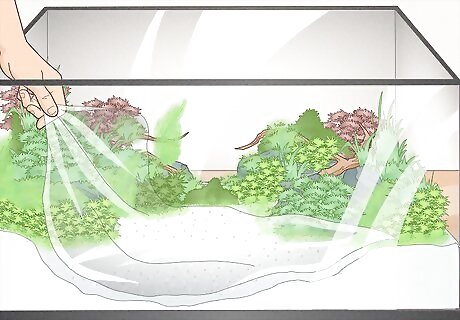
Cover the soil first. It is important to cover the soil to stop stirring it up when the water is added. Try covering the soil with plastic table sheets or you can use your hand or any non-toxic objects to stop the water flowing directly onto the soil, impacting it.
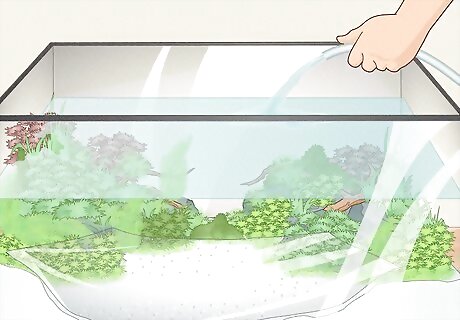
Fill up the tank. Pour the water in gently until the tank is mostly filled. After filling up the tank, remove the plastic sheets (if you used them), turn on the light, CO2 (if using) and filter. Your aquascape will start circulating. It is normal for the water to be milk white after filling up the tank. Light and CO2 should be turned on for 8-10 hours a day. It is normal if you see fungi growing on the driftwood, they will usually disappear within a week. After cycling the tank for 2 weeks, you can put cleaner crews, such as amano shrimps and otocincleus. They can help remove algae and will break down plant wastes.
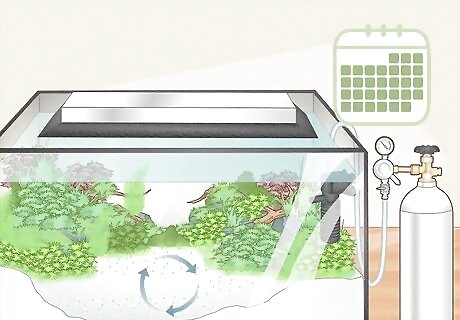
Cycle the tank for a month. After cycling the tank for that long, if the tank seems to be clean enough, you can add in your own fish or ornamental fish that fit and look good with the aquascape. You can either choose fish that will contrast and stand out in the aquascape or fish that blend in with the aquascape, depending on whether you want a lively or harmonious aquascape. Do not overpopulate the aquascape, as doing so will cause an ecological collapse.
Maintaining the Aquascape
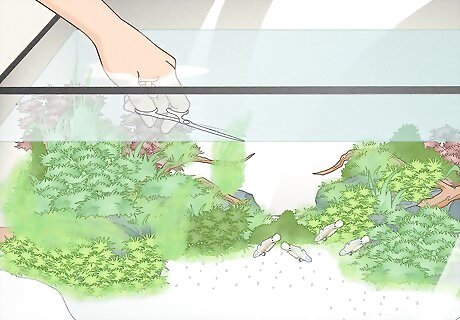
Trim the plants from time to time to maintain the look of the aquascape. Some trimming tips to take note of are: Foreground plants: Trim the top layer of the plant carpet to stop the bottom layer of plants decaying. If this layer decays, it will cause the whole carpet to float up. While trimming, make sure to remove the trimmed-out plants as any dying vegetation will decay and pollute the tank. Mid-ground plants: You don't need to trim these plants often, but if you think a leaf of the javafern is growing too large, cut it out. Background plants: You can make the stem plants grow more densely by trimming them. When trimming for the first time, cut them at the lower part of the stem. Subsequently, cut higher each time.
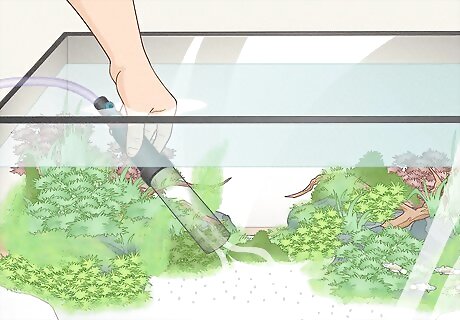
Do regular water changes as part of your tank maintenance. Change 30 to 50% of the water 1 or 2 times a week. Sometimes, even though the water looks crystal clear, there will be a lot of ammonia (a poisonous chemical for the plants and fish), so it is important to change the water, no matter how clean the aquascape looks.
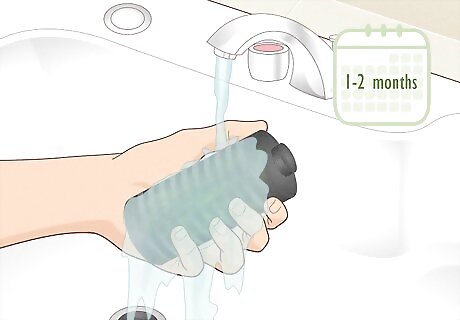
Clean the filter media every month. Rinse the biological filter media but not too thoroughly as beneficial bacteria live on them and you'll want them to stay intact. Replace the filter cottons if you use them.
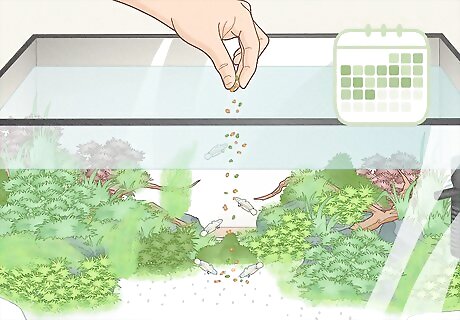
Feed your fish every day. If you've added fish, they need daily feeding and be fed the amount of food they can eat in 2 minutes. This will avoid overfeeding or having excess food polluting the tank.




















Comments
0 comment